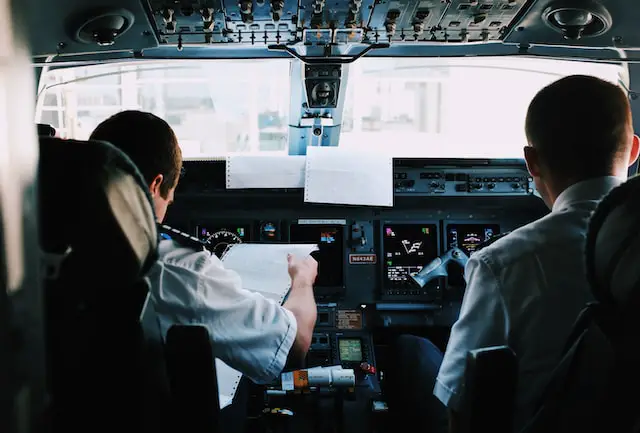Fighter pilots are highly trained professionals who operate some of the most advanced aircraft in the world. They are tasked with a range of missions, from air-to-air combat to ground support and reconnaissance. One of the key skills that fighter pilots possess is the ability to withstand high levels of G-forces, which can occur during extreme maneuvers. In this article, we will discuss what G-forces are, how they affect the human body, and how many Gs fighter pilots typically pull.

G-forces, or gravitational forces, are a measure of the acceleration that an object experiences due to gravity. One G is equal to the force of gravity at the Earth’s surface, which is approximately 9.8 meters per second squared (m/s^2). When an object experiences more than one G, it feels heavier than usual, and the forces acting on it can be quite intense.
The human body can withstand a certain amount of G-forces before experiencing negative effects. For most people, the maximum amount of Gs they can tolerate is around 5 Gs. At this level, blood is forced away from the brain, and the body can experience tunnel vision, loss of consciousness, and other negative effects.
However, fighter pilots are trained to withstand much higher levels of G-forces. This is because the extreme maneuvers that they perform in combat and training can generate G-forces well above 5 Gs. In order to prepare for this, fighter pilots undergo rigorous physical training and conditioning to build up their tolerance to G-forces.
The amount of Gs that fighter pilots can pull depends on a variety of factors, including the type of aircraft they are flying, the altitude they are flying at, and the type of maneuver they are performing. In general, modern fighter aircraft are capable of generating G-forces of up to 9 Gs or more, although sustained high-G maneuvers can be extremely taxing on the body and are typically avoided.
One of the key factors that affects how many Gs fighter pilots can pull is the type of aircraft they are flying. Some aircraft, such as the F-16 Fighting Falcon and the F-22 Raptor, are designed to be highly maneuverable and can generate high levels of G-forces during tight turns and other maneuvers. Other aircraft, such as the B-52 bomber, are not designed for high-performance flight and are less capable of generating high-G forces.
The altitude that a fighter pilot is flying at can also affect the amount of Gs they can pull. At high altitudes, the air is less dense, which means that there is less resistance to the aircraft’s movement. This can allow fighter pilots to perform more extreme maneuvers and generate higher levels of G-forces.
Finally, the type of maneuver that a fighter pilot is performing can also affect the amount of Gs they experience. For example, a sharp turn at high speed can generate more Gs than a gentle climb or descent.
In order to protect themselves from the effects of high G-forces, fighter pilots wear specialized equipment such as G-suits and anti-G straining maneuvers (AGSMs). G-suits are worn around the waist and legs and inflate during high-G maneuvers to prevent blood from pooling in the lower body. AGSMs involve tensing the muscles in the legs and abdomen and holding the breath to maintain blood flow to the brain and prevent loss of consciousness.
In conclusion, fighter pilots are capable of withstanding much higher levels of G-forces than the average person. The amount of Gs they can pull depends on a variety of factors, including the type of aircraft they are flying, the altitude they are flying at, and the type of maneuver they are performing.
